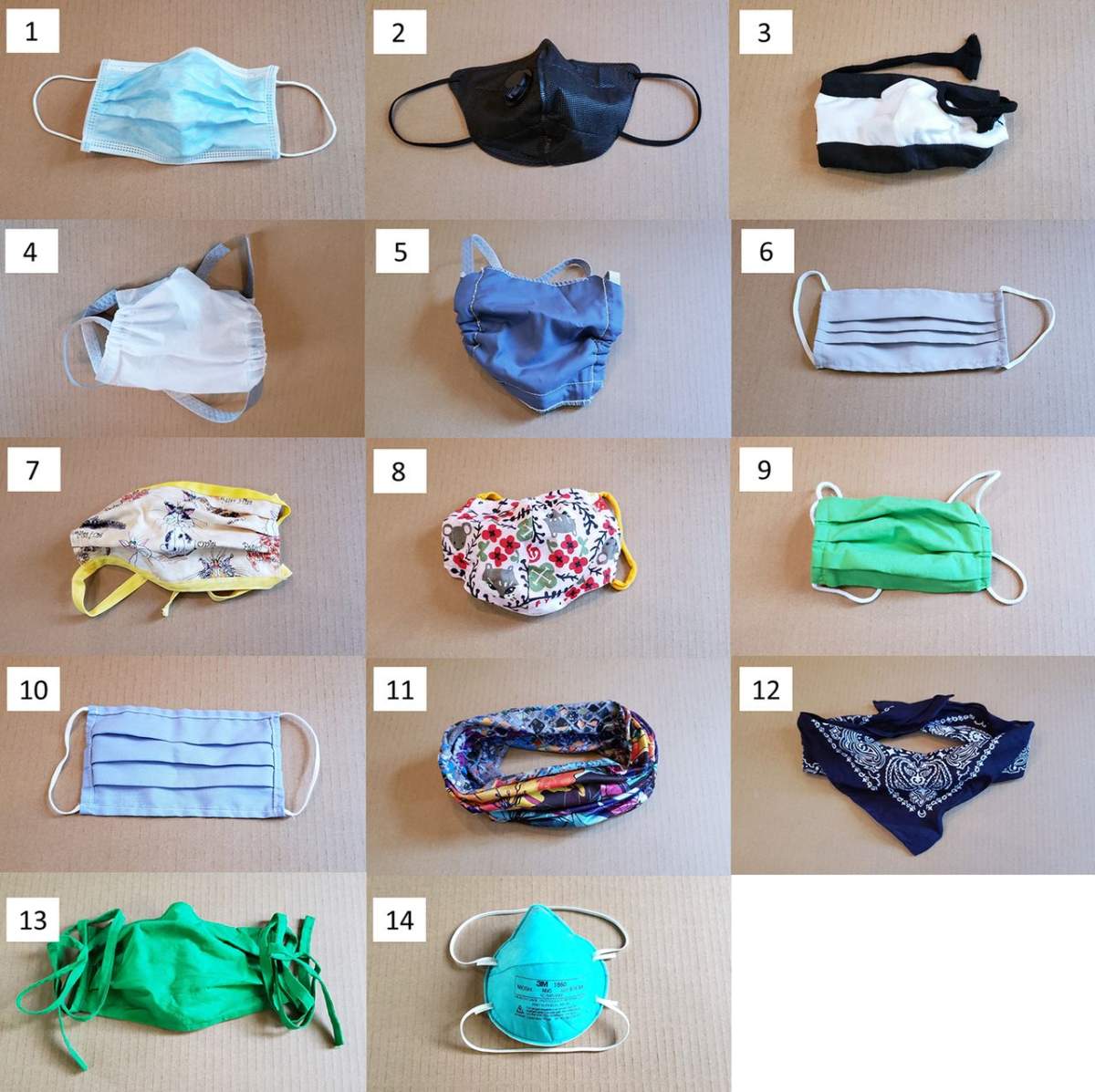“Neck gaiters” and other tube-shaped scarves don’t necessarily spread more coronavirus than no mask at all, experts say, despite some recent headlines to the contrary.

A new study on masks by a group of U.S. researchers made news this week, with some people saying that it proves once and for all which mask best prevents coronavirus spread.
But while experts say the findings have been a bit overblown, it’s true that some kinds of masks work better than others, and there are things you should look for when making or purchasing a mask.
The study, printed in the journal Science Advances, looked at a new way to test how well masks prevented the spread of droplets from someone’s nose and mouth — thought to be the main way the virus spreads.
The study authors’ goal wasn’t to test masks, but to develop an easy method for mask-testing.
What they came up with was a laser and camera system that could spot the droplets produced by someone speaking the words, “Stay healthy, people.” To test out their invention, they had a person try out a variety of commonly used masks, including disposable medical masks, cotton cloth masks, a neck-warmer and a bandana, and measured how the droplet pattern changed with each mask.

But because the tests were so small — often just done by a single person — and weren’t designed to actually evaluate different kinds of masks in a comprehensive way, it’s hard to draw conclusions from this single study, according to Dr. Susy Hota, medical director of infection prevention and control at the University Health Network in Toronto.

Get weekly health news
“This, unfortunately, isn’t a definitive, groundbreaking study that’s going to help us understand which masks out on the market are best,” she said. “With the small range of what was tested, it would be hard to derive any conclusions from it.”
The study authors themselves note that much more research is required to be able to actually say which masks work best. “This was just a demonstration — more work is required to investigate variations in masks, speakers, and how people wear them,” said co-author Martin Fischer, a chemist and physicist at Duke University, in a press release.
But their findings, which again are preliminary, line up with what we already know about masks from previous studies, according to Dasantila Golemi-Kotra, an associate professor of microbiology at York University.
Unsurprisingly, the standard medical mask and a N95 respirator without valves performed very well.
But the bandana appeared to be very ineffective at blocking droplets. Another study, looking at mask fit, showed why this method might not work very well, Golemi-Kotra said.
This study suggests that it’s important that the mask “fits tightly around the nose,” she said. A metal strip for the bridge of your nose can help with this. Similarly, a mask that gapes at the edges on your cheeks should have its ear loops tightened to lessen the gaps, she said.
“Make sure that you have it made so that the nose can be covered, the mouth can be covered, it can rest under the chin,” Hota said. It’s also important that the mask continues to cover the chin when you talk, she said. Pleated masks are good at stretching while you move your mouth, she thinks.
Fabric matters too, she said. A bandana is usually made from a pretty lightweight material, which might be why it performed so poorly in this test.
Different fabrics have different properties, Golemi-Kotra said. Partly, you want to look at how tightly woven the fabric is. Cotton generally has a tight weave, which will block large droplets from getting through. Some other fabrics, like polypropylene, will actually attract droplets through static electricity, which again means they won’t escape into the air.
So the “neck gaiter” — a neckwarmer-style tube scarf, in this case made from a polyester/spandex blend — might have failed because of its thin fabric, a study author suggested in an interview with CNET. In this test, the authors said, it actually seemed to break larger droplets into smaller, more spreadable ones, even performing worse than not wearing anything at all. Neckwarmers in different fabrics might show different results.

When shopping for a mask, you want multiple layers of fabric, Hota said. The inner layer should be of a moisture-absorbing material, like cotton. The outer layer should be a manmade fabric that repels moisture while remaining breathable, like polypropylene or a cotton-polyester blend. The World Health Organization recommends three layers of fabric, she said, but what fabric the middle layer is matters a bit less.
“Breathability is important as well,” she said, “because that’s speaking to the human factor side of it. You can design something perfectly as you’d like from a scientific perspective. But if people aren’t going to wear it, then it’s all for naught.”
In this study, pretty much any actual mask was better than none at all, with most common fabric designs performing similarly. “Something is better than nothing,” Hota said, though she would prefer that people wear a mask and not a bandana or other such improvised protection.





Comments